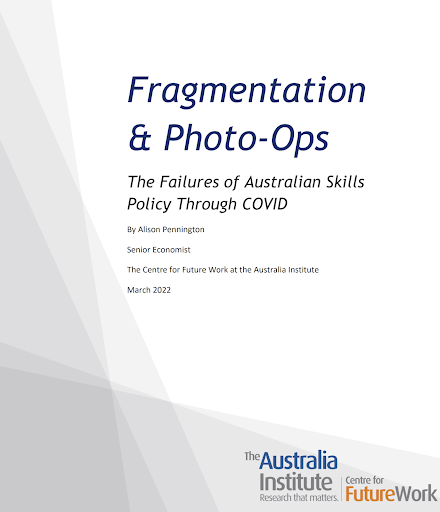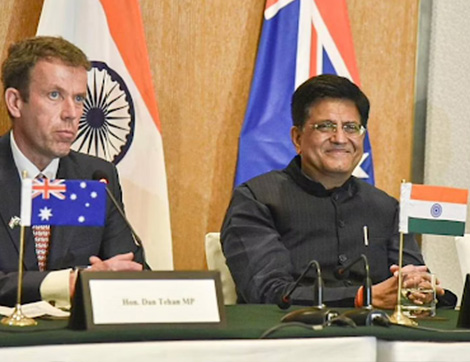Your training organisation must comply with all relevant Commonwealth, state, and territorial laws and regulations. This includes (but is not limited to):
The National Vocational Education and Training Regulator Act 2011
The NVR Act also establishes the National Quality Framework (NQF). The NQF promotes high quality, nationally consistent training and assessment services. It does this by setting minimum standards for registered training organisations (RTOs), and requires RTOs to be monitored against these standards. The Standards for Registered Training Organisations (RTOs) 2015 are made under subsection 185(1) and subsection 186(1) of the National Vocational Education and Training Regulator Act 2011 (the Act). For more information, see the Australian Skills Quality Authority website.
The Education Services for Overseas Students Act 2000
The ESOS Act sets out the legislative framework for the regulation of the provision of education and training to overseas students on student visas and contains standards for providers in relation to courses of study, marketing, admissions, recruitments, orientation, manage changes to courses, academic progress, complaints and appeals among other requirements.
The Competition and Consumer Act 2010
The law covers many aspects of the relationship between businesses and consumers, including issues such as unfair contract terms, misleading or deceptive conduct, and unconscionable conduct. The law also contains specific provisions relating to the provision of services by businesses to consumers.
The Work Health and Safety act
The RTO will take all reasonable steps to ensure the health and safety of its employees, students, contractors, and visitors.
The RTO has in place a range of policies and procedures to ensure compliance with relevant laws and regulations, including but not limited to:
- Work Health and Safety Policy
- OHS/WHS Risk Management Procedure
- Emergency Evacuation Procedure.
In the event that an incident does occur, the RTO will investigate and take corrective action as required. This may include implementing new or revised policies and procedures, providing training to employees, or taking disciplinary action against those involved. The RTO is committed to the continual improvement of its compliance with all relevant laws and regulations.
The Discrimination Act
The RTO is committed to providing a discrimination-free environment for all employees, students, contractors, and other individuals who interact with the RTO. The RTO will not tolerate any form of discrimination or harassment on the basis of race, ethnicity, national origin, religion, sex, gender identity or expression, sexual orientation, age, disability, or any other protected characteristic. Anyone who experiences or witnesses discrimination or harassment at the RTO is encouraged to report it to a supervisor or HR representative. The RTO will investigate all reports of discrimination and take appropriate corrective action if necessary.
The Equal Opportunity Act 2010
RTO must value diversity and inclusion in their workforce and welcome applications from people of all backgrounds, experiences, and abilities. They should remain committed to creating a safe and supportive environment for all members of the community.
The Racial and Religious Tolerance Act 2001
The RTO also complies with international human rights instruments to which Australia is a party, including the International Covenant on Civil and Political Rights, the International Covenant on Economic, Social and Cultural Rights, and the Convention on the Elimination of All Forms of Racial Discrimination.
The Working with Children Act 2005
The RTO is committed to providing a safe and welcoming environment for all members of the community, including children. Staff members undergo regular training on their obligations under the Working with Children Act 2005 and are required to adhere to strict guidelines when working with or around children. The safety of all stakeholders including children should always remain the organisation’s number one priority, and the organisation should always take any necessary measures to protect them from harm.
National Police Check
The NPC is an important part of RTO’s commitment to providing a safe and secure environment for students. It helps organisations identify any potential risks associated with individuals who may have access to the students.
Privacy Act 1988 (Cth)
The RTO is committed to protecting the privacy of all individuals with whom it deals. The RTO has in place policies and procedures to ensure that all personal information is collected, stored, used and disclosed in accordance with the Privacy Act 1988 (Cth). The RTO also takes reasonable steps to protect all personal information from misuse, interference and loss, and from unauthorised access, modification or disclosure. Individuals have a right to access their personal information held by the RTO, and to request that their personal information be corrected if it is inaccurate, incomplete or out-of-date.
The Copyright Act 1968
RTOs are required to comply with the Copyright Act 1968 and all relevant Commonwealth, state and territory laws and regulations. The purpose of this compliance is to ensure that RTOs can continue to provide quality training and education services to their students.
Some of the key requirements that RTOs must comply with include:
- ensuring that all material used in the delivery of training and education services is copyright compliant
- obtaining the appropriate licences or permissions for the use of any copyrighted material
- ensuring that all staff involved in the delivery of training and education services are aware of their obligations under the Copyright Act 1968.
RTOs should also have in place procedures for dealing with any complaints or inquiries relating to copyright compliance.
It is your responsibility to ensure that you are familiar with all relevant laws and regulations and that your training organisation complies with them. Your RTO will be regularly audited to ensure compliance. Compliance with legislation is essential to maintaining your registration.
The RTO also has a range of policies and procedures in place to ensure compliance with these laws and regulations. These include policies on equal opportunity and non-discrimination, child safety, work health and safety, privacy, copyright, and public records.
The RTO is committed to providing a safe and inclusive environment for all members of the community. We encourage everyone to familiarise themselves with our policies and procedures and ensure they cover all aspects of RTO registration, administration, governance and management.
If you have any questions about your obligations, please seek legal advice or contact RTO consultants.




















